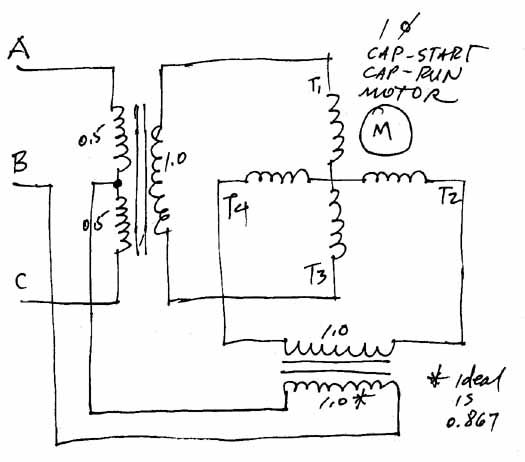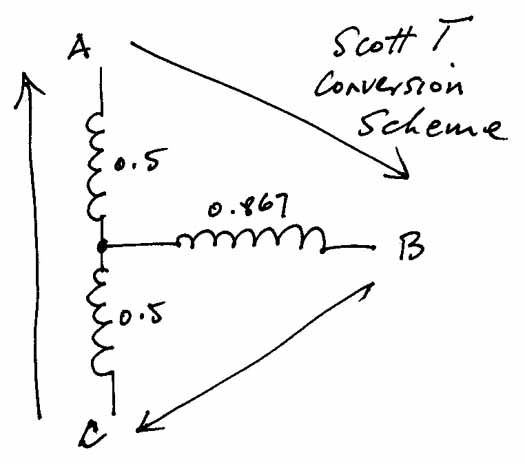peterh5322
Diamond
- Joined
- Dec 15, 2002
- Location
- Monterey Bay, California
Here is one possible scheme for powering a capacitor-start/capacitor-run single-phase motor from a VFD.
This scheme utilizes the well-known "Scott T".
The ideal transformation ratios are 0.5, 0.5 and 0.867, but others may be practical as well.
If trouble (i.e., saturation, or excessive current) in the start winding is observed, a buck/boost transformer in buck mode could be tried.

This scheme utilizes the well-known "Scott T".
The ideal transformation ratios are 0.5, 0.5 and 0.867, but others may be practical as well.
If trouble (i.e., saturation, or excessive current) in the start winding is observed, a buck/boost transformer in buck mode could be tried.



